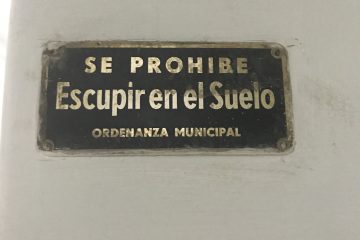Earlier this year when I went to the Central States Conference on the Teaching of Foreign Languages, I attended some helpful, creative sessions by some very knowledgeable and effective language teachers and leaders. One of them was about proficiency goals and was given by the director of world languages of a large school district. I enjoyed her talk and asked her a whole lot of questions about some issues I’d been facing, but one thing she said gave me pause.
She was talking about a conversation she’d had with a teacher as she tried to get this teacher to teach with more proficiency-oriented, real-world goals in mind. She suggested the teacher remove commands from her plans, and teacher gave a reason that this WL director didn’t like for teaching commands – she said, “If I don’t teach commands, how will they learn the subjunctive?” The WL director acted like this was the end of the discussion – if you have to come up with such an absurd reason to teach commands, it must be superfluous and please remove it from your curriculum ASAP. Her added comment was, “Why do teenagers need commands? They’re not going to go around commanding people in the target language.”
Now, I agree that teaching subjunctive is a lousy reason to teach commands. For one reason, there’s nothing communicative or proficiency-related about such a goal. Just as you practice past tense so that students can “relate a movie plot” or “talk about their last vacation,” there should be some actual use for teaching commands. Is this woman right? Are there no plausible reasons for teaching teenagers to use TL commands?
In my mind (and in my classroom) there are, and it’s all about what students want to use their language for. In our (self-designed) program, we have units designed around using commands in both Spanish 2 and Spanish 3. The assessments are primarily focused on the two main communicative purposes of giving commands: 1) giving directions (as in, to a place) and 2) giving instructions.
When would students need to do either of these things in the target language? For us, it’s all about one of the five C’s – Communities. I teach at a private, faith-based school, but I’m not sure the goal is all that different for students in other types of schools. When I think about how our students come in contact with target-language speakers, I think of students who have random friends who speak Spanish, yes, but mostly I think of students who encounter them in community service situations (including traveling to other countries on service trips), sports environments, and at work. Here are real-life reasons my students have used commands:
- helping children do a craft
- explaining how to play a game
- helping an exchange student figure out homework
- helping to train LEP workers at a fast-food job
- giving directions to customers to find something at a retail job (one student got a raise at his retail job just because of his Spanish proficiency)
- teaming up with TL speakers at community soccer clubs
What about you? Is this WL director right – are there no communicative reasons your students need commands? What other reasons have you encountered?
photo credit Chile Primero
2 Comments
Comments are closed.





Recipes use commands, too, as do magazines with “how-to” type articles. Also: urgent warnings, as in “Ten cuidado!” Raising our son bilingual has definitely improved my grasp of commands. 🙂
Good points! One of my favorite ways to contextualize commands is to get kids to explain how to make their favorite food – even if it’s just a PBJ sandwich.